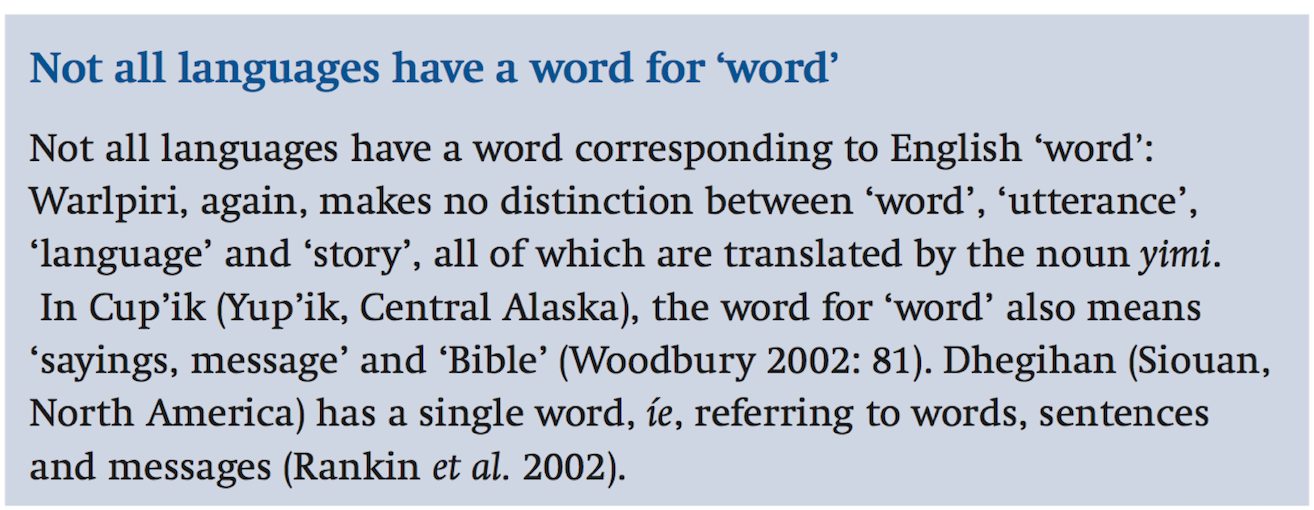- Pre-processing for Text Analytics
- Linguistics 101
- Crash course for R
Linguistic Analysis and Data Science
lecture 04
謝舒凱 Graduate Institute of Linguistics, NTU
大綱
Lemmatization and Stemmization
垂直處理
morpheme, stem, root, lexeme, lemma, word 的關係(見黑板)
Stemmization (stemmer) 要把詞綴與詞幹分開 reduces the words to the root (via suffix stripping). e.g., fished", and "fisher" to "fish".
- irregular verbs (e.g., run, ran)?
Lemmatization (lemmatizer) 要把 lemma 找出來(所以要動用到語法訊息)does similar thing, but the part of speech is first detected prior to attempting to find the root since for some languages, the stemming rules change depending on a word's part of speech.
看例子 (wiki) 1. The word "better" has "good" as its lemma. This link is missed by stemming, as it requires a dictionary look-up. 2. The word "walk" is the base form for word "walking", and hence this is matched in both stemming and lemmatisation. 3. The word "meeting" can be either the base form of a noun or a form of a verb ("to meet") depending on the context, e.g., "in our last meeting" or "We are meeting again tomorrow". Unlike stemming, lemmatisation can in principle select the appropriate lemma depending on the context.
- 主要是有屈折變化 (inflectional) 的語言才有這個處理問題。
Tokenization
水平處理
- Given a character sequence (and a pre-defined unit), tokenization is the task of chopping it up into pieces, called tokens.
- A tokenizer divides text into a sequence of tokens, which in many cases correspond to "words".
- Tokenization often serve as the initial phase in NLP, i.e., locating word boundaries. But challenges in tokenization depends on the type of language.
Chinese Word Segmentation
中文分詞(斷詞)Chinese word segmentation 可以看成是 tokenization 的一個特例,但是涉及更深一層的語言與認知互動。
因為 (漢語) 語言分析的基本單位沒有你想的那麼穩固, 自然語言處理先卡關才引起注意。
- e.g.,
昨天阿里巴巴創辦人馬雲端上新的網路服務
- e.g.,
但是 Wordhood 的問題不是漢語才有。

Chinese Word Segmentation
結構性的歧義
Structural Ambiguity
- 歧義現象是自然語言的常態,有好幾種類別(詞彙,結構,邏輯域)。
- 結構類型是中文分詞關注的現象,又粗略可分幾種:
- 組合型歧義:
這個門把手壞了vs請把手拿開。 - 交集型歧義:
化妝/和/服裝vs化妝/和服/裝。
- 組合型歧義:
未登錄詞識別
OOV (Out-of-Vocabulary) Recognition
包括新詞、術語等未收錄在字典裡面的「詞」。至少包括了:
- 數字
- 命名實體 (named entity):人名、地名、機構名等等。
- 離合詞、詞塊。
名字識別
字典沒有,就要寫識別規則讓機器來辨識
組合規律
前後規律
- 前面出現:
校長、老闆 - 後面出現:
老師、教授、小姐、先生
- 前面出現:
Exercise
搜尋一下某人的名字,看看出現的語境。妳可以想出多一些規則嗎?
附帶一提:人名的自動辨識與分群 (person name identification/clustering) 也是個 NLP 研究領域,更難一點的還有轉譯人名的問題 (transliterated person name identification).
詞類 (Parts of Speech)
- 詞類是根據不同程度的句法功能分類下的結果。
- 兼類 (polyfunctionality) 與動詞名物化。
中文的詞類概念
- (很重要!) 沒有構詞標記與屈折形態變化不等於沒有語法!!!
- 可以從 8 大詞類到 27大類
為什麼詞類對於文本解析很重要?
舉一個例子:常識抽取對於情緒分析的重要
“我昨天深夜在鐵工廠看到一個小女孩”
前處理綜合協作練習 as Group Bonus (20151015)
總統的語言行為
- 希望每組都能做,加碼 30分/person !
- 資料放在這裏 的
usP和twP。- 注意:可能有 noise.
小組討論出想要看到的現象,用 R code 實作,附上說明存成 Rmd。
- 那個美國總統最多話 (tokens),用字量最豐富 (types) ?
- 那個台灣總統使用最多的第一人稱代名詞 (我,我們)?
- 所有總統都用到的名詞表?
- . . . . . . . . . . . . . . . . . .
可參考 typical.tm.Rmd